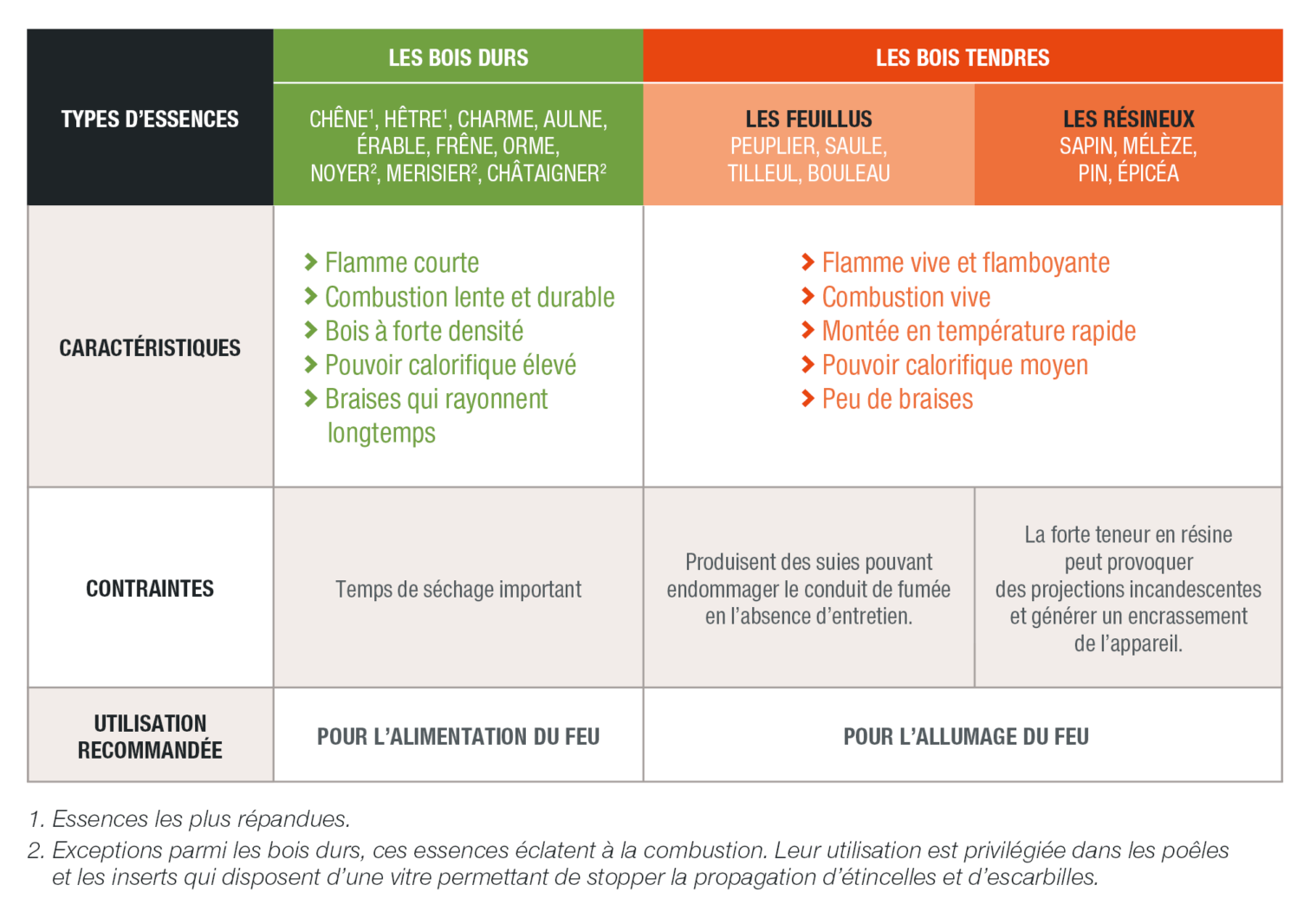Keeping your fire going
Before adding more fuel
Once lit, it is recommended to wait until only embers remain before adding more wood. However, don’t let your fire cool completely before refuelling. Feel free to revive the flames using a bellows if needed.
Adding more fuel
Before opening the stove door (slowly, to avoid smoke backdraft), be sure to fully open the air inlets and draft flap. Then, stack the logs while avoiding overfilling the hearth. Depending on their size, it is generally recommended to place three to five logs flat on the embers.
Monitoring
You can assess combustion quality by checking the smoke from your chimney top – it should be nearly invisible. Grey or black smoke signals incomplete combustion. Also inspect the ash: it should be white and fine. Darker ash indicates unburned charcoal remains.
Which wood species should I use?
Hardwoods
Characteristics:
- Short flame
- Slow and long-lasting burn
- High-density wood
- High heat output
- Embers that radiate heat for a long time
Drawback: Requires a long drying time
Recommended use: ideal for feeding the fire
Species: oak¹, beech¹, hornbeam, alder, maple, ash, elm, walnut², cherry², sweet chestnut²
Softwoods
- Characteristics: :
- Bright, lively flame
- Quick-burning
- Rapid temperature rise
- Moderate heat output
- Few embers
- Recommended use: ideal for lighting the fire
Two types of softwood:
Deciduous softwoods
- Species: poplar, willow, lime, birch
- Drawbacks: produce soot which can damage the flue if not regularly cleaned out
Coniferous softwoods
- Species: fir, larch, pine, spruce
- Drawbacks: high resin content may cause sparks and can lead to soot build-up in the appliance
¹: Most common species.
²: Exceptions among hardwoods, these species tend to spark during combustion. They are best used in stoves or inserts with a glass door to prevent flying sparks and embers.
Which wood species should I use?
